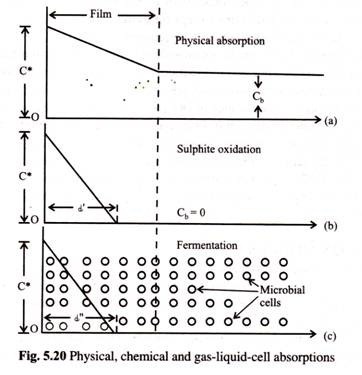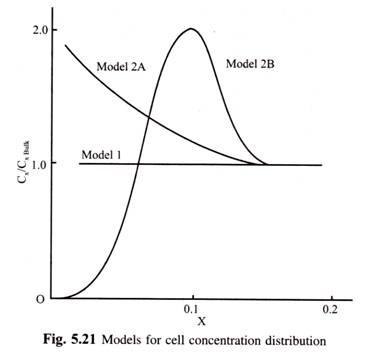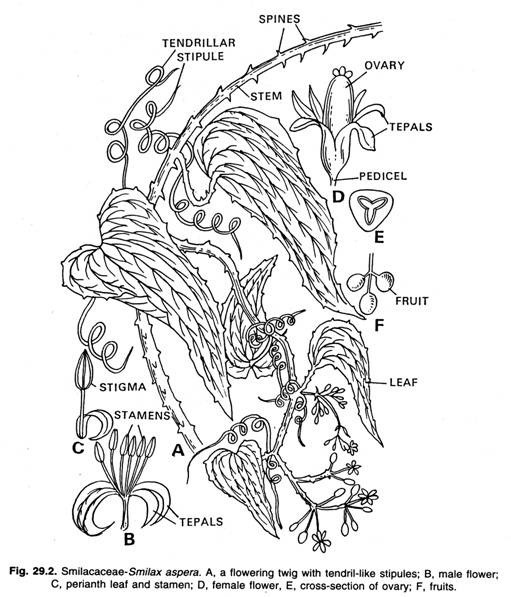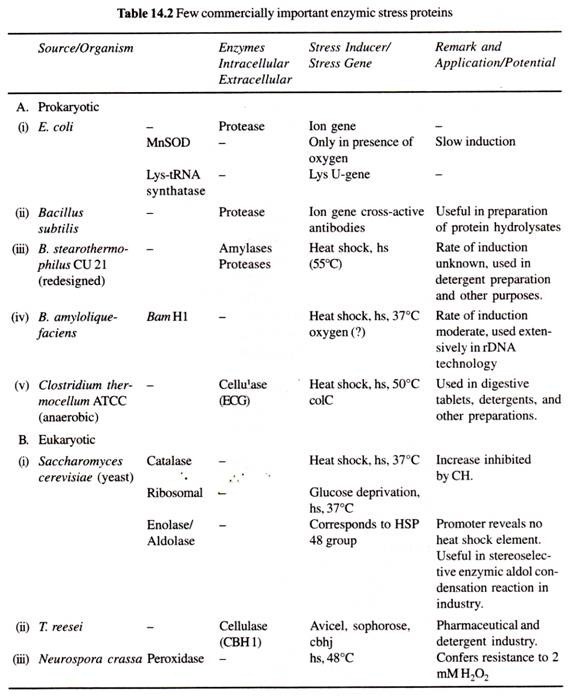ADVERTISEMENTS:
In this essay we will discuss about:- 1. Root of Ginkgo 2. Stem of Ginkgo 3. Leaf.
Essay # 1. Root of Ginkgo:
External Morphology:
Ginkgo shows a typical tap root system. The tap root persists and is extensively branched and penetrates deep into the soil. The roots of Ginkgo biloba is characterised by vasicular-arbuscular-mycorrhizas (VAM) with Glomus epigaeum inoculation.
ADVERTISEMENTS:
Internal Structure:
Anatomically, the young root of Ginkgo is diarch (Fig. 1.36), but older roots become tetrarch or hexarch. The following structures are discernible in the young root from outside inward: a single-layered epidermis; multi-layed thin-walled cortex containing several tannin-filled cells, calcium oxalate crystals and many mucilage canals; a single-layered endodermis; a layer of pericycle; diarch radial vascular bundle. Xylem is exarch and remains embedded within phloem. The intracellular VAM hyphae are much abundant than the intercellular hyphae.
The normal secondary growth takes place in roots, but the annual rings are not so prominent as in the stem.
Essay # 2. Stem of Ginkgo:
ADVERTISEMENTS:
External Morphology:
The stem is woody, cylindical and profusely branched, giving rise to an ex-current pattern of branching. The branches develop on the upper part of the stem. The branches are dimorphic bearing two types of shoots, viz., the long shoot and the dwarf shoot.
Long shoots are the branches of unlimited growth which gradually become reduced in size, thus giving the tree a pyramid-like or pagoda-like appearance Dwarf shoots are the branches of limited growth which are borne on long shoots. Each dwarf shoot bears scale leaves, leaf scars and a crown of foliage leaves (Fig. 1.35). Thus, a dwarf shoot looks like a miniature Cycas tree.
Internal Structure:
Anatomically, the long shoot can easily be distinguished from the dwarf shoot. The long shoot has comparatively narrow cortex and pith with a few mucilage ducts (Fig. 1.37A). The wood is pycnoxylic, broad and hard. On the other hand, the dwarf shoot has broad cortex and pith with a large number of mucilage ducts (Fig. 1.37B).
The wood is pycnoxylic and less in amount. Moreover, the T.S. of dwarf shoot shows several double leaf traces. On the other- hand, the leaf trace in the T.S. of long shoot can only be visible if the section is cut through the region of the attachment of leaves. The two leaf traces that enter into the petiole of the leaf are developed from separate adjacent axial bundles of the stem.
The stem anatomy in both the long and dwarf shoot shows a heavily cutinised single layered epidermis. In order stem, the epidermis is replaced by periderm. The epidermis is followed by cortex. The cortex is made up parenchymatous cells.
ADVERTISEMENTS:
The cortex also consists of tanniniferous cells, sphaeraphides, mucilage ducts and few cortical cells contain crystals of calcium oxalate. The cortex of older stem also contains numerous fibres and sclerides. The endodermis and pericycle are not well-differentiated in long shoot.
In young stem, vascular bundles are arranged in a ring. Each vascular bundle is conjoint, collateral and open. Thus, the vascular cylinder becomes endarch siphonostele at the onset of secondary growth. The tracheids are arranged in radial rows. The protoxylen tracheids have spiral thickening, while the metaxylem tracheids have reticulate thickening. The sieve cells and parenchyma with occasional albuminous cells constitute the phloem.
Secondary Growth in Thickness:
The cambium is normal in position and normal in function. Thus, the cambium ring cuts off a continuous cylinder of secondary xylem inside and secondary phloem outside. The cambium also produces secondary medullary rays at places (Fig. 1.38A).
ADVERTISEMENTS:
The secondary xylem is made up of tracheids whose end almost remain at the same level, without overlapping each other. Thus, wood of Ginkgo becomes very brittle and has little commercial value. The secondary phloem is composed of sieve elements, fibres and a few parenchyma.
The R.L.S. of the wood shows (Fig. 1.38C) tracheids with one or two rows of bordered pits. The mature tracheids develop thickened border in the form of crescentic bars called Bars of Sanio or Crassulae in between the pits. Sometimes, crassulae cross the interior of tracheids. There are uniseriate xylem rays seen in T.L.S. (Fig. 1.38B). The rays vary in height, 1-3 cells high in long shoots and 1-15 cells high in dwarf shoots.
The unique features in the wood of G. biloba that separate them from other gymnosperms are the narrow tracheids and calcium oxalate crystals containing xylem parenchyma. These characters may be used to distinguish Ginkgo wood from the Pinus wood. The annual ring is not well-defined.
ADVERTISEMENTS:
The extrastelar secondary growth takes place by the cork cambium which cuts off secondary cortex on the inner side and cork on the outer side. The secondary cortex is well- developed and devoid of mucilage ducts. Later, the epidermis is replaced by the cork.
Essay # 3. Leaf of Ginkgo:
External Morphology:
The leaves are simple, long petiolate, fan-shaped or wedged- shaped with expanded apex and narrow base (Fig. 1.35). The leaves present on the dwarf shoots are entire with wary margin; while those present on the long shoots are deeply lobed (bilobed), hence the specific name biloba.
The leaves at the seedling stage become variously lobed, thus giving a palmitified appearance. This variously lobed condition reminds the fossil leaf genera of Ginkgoales. Each leaf receives an double leaf-trace, each of which again dichotomise — resulting into four strands. These strands again repeatedly dichotomise to form open dichotomous system of veins. It has been observed that vein anastomoses and about 10% of the leaves have vein unions.
ADVERTISEMENTS:
Internal Structure:
Petiole:
The T.S. of a petiole shows a thick cuticularised epidermis which is broken by stomata. A few-layered thick hypodermis is present beneath the epidermis. This is followed by a broad cortex where a few mucilage ducts, tannin-filled cells and spaeraphides are irregularly distributed.
There are two endarch vascular bundles surrounded by a sclerenchymatous bundle sheath. The cambium is present in-between the phloem and xylem. The bundles are interspersed with some indistinct centripetal xylem called transfusion tracheids.
Lamina:
The T.S. of the lamina shows an upper and a lower epidermis which are thickly cuticularised (Fig. 1.39). The sunken stomata are generally confined to the lower epidermis. The mesophyll is present in between the upper and the lower epidermis. The mesophyll is differentiated into the upper palisade and lower spongy parenchyma in the leaves of long shoot.
ADVERTISEMENTS:
However, the palisade parenchyma is not differentiated in the leaves of dwarf shoot. The lower mesophyll cells are drawn out parallel to the leaf surface forming transfusion tissue. There are many large mucilage canals in the mesophyll region traversing between the vascular bundles. Vascular bundles have mesarch xylem in some cases. Each vascular bundle is surrounded by a sclerenchymatous sheath.





